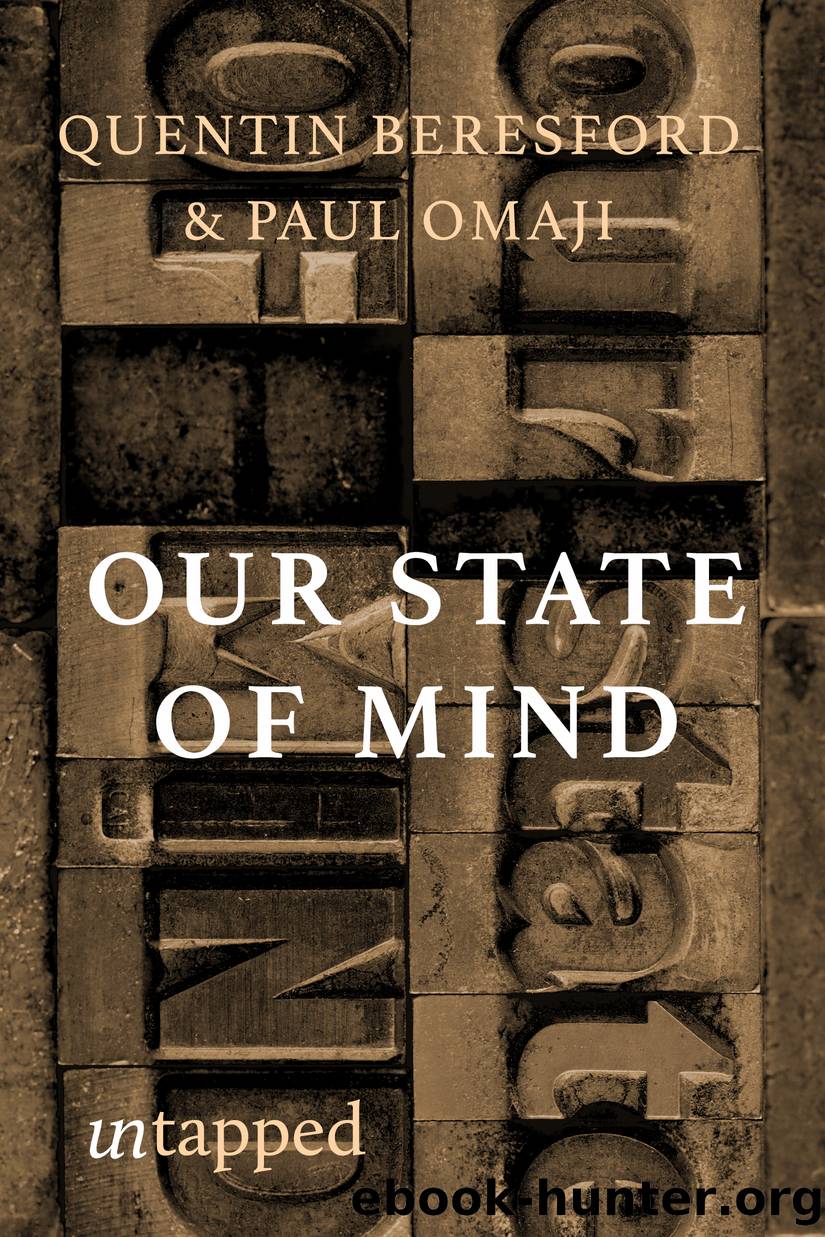Our State of Mind by Quentin Beresford

Author:Quentin Beresford
Language: eng
Format: epub
Publisher: Ligature Pty Limited
Published: 2021-11-13T03:07:34+00:00
5
Assimilation In Practice
In 1965 âYvonneâ arrived at Wandering Mission. She had been committed by the court âdue to the neglect of her parents and her lack of attendance at schoolâ. She was included as a case history in a 1971 thesis submitted for a Teacherâs Higher Certificate which examined the work of Wandering Mission.203 The details of her case highlight the difficulties in assessing the impact of assimilation. The author is at some pains to construct a âsuccess storyâ out of the misery of her family life. Yvonneâs father was said to have been âdrinking fuel spirits by the time he was twenty and had over 60 convictions in police courts.â Yvonne was described as âundernourished, extremely shy, frightened, self-conscious and very moodyâ. She had little school prior to coming to the mission. For a year she worked at the mission as a domestic, during which time, âshe developed good tastes in personal grooming as well as dress sense.â Through the mission she obtained outside employment as a domestic on a nearby farm. However, she left to rejoin her mother at Narrogin Reserve. Twelve months later she returned looking âdirty, undernourished and shabbily dressedâ. She was again accepted as a domestic and not long afterwards âshe quickly changed to a well mannered, well dressed young girlâ. With the help of the Missionâs Pallotine Order she was sent to Melbourne to train as a nursing aide and, at the time the thesis was completed, was said to be doing well in her chosen career. She was assessed as capable of doing well âif she remains in Melbourne. Could possibly meet a suitable male and settle down in that city to a well adjusted domestic life.â
Was this an unequivocal success story of assimilation, as the writer so readily assumes? The âstorylineâ is so apparent: mission rescues Aboriginal girl from wretched home life and gives her the skills to enter white society. We will probably never know what this young woman felt about the course her life had taken under assimilation. However, efforts to construct success stories, such as Yvonneâs, raise a number of issues. Firstly, she was being constructed as a âsuccessâ only by reference to her external circumstances and, secondly, she was an atypical case. During the 1950s and 60s, when most of the children separated from their families emerged as young adults in the community, Yvonne was one of the very few who managed to obtain vocational qualifications.
Pronouncements in the post-war period ascribed a range of different meanings to assimilation. The official position, as enunciated at the Commonwealth level continued to be, as Paul Hasluck expressed it: âthat, in the course of time, it is expected that all persons of aboriginal blood or mixed blood in Australia will live like white Australians do.â204 This position assumed a cultural transformation occurring among Aborigines but otherwise gave the appearance of a society striving for material and social equality. It suggested that, eventually, blacks and whites would live side by side albeit with blacks having dispensed with their culture.
Download
This site does not store any files on its server. We only index and link to content provided by other sites. Please contact the content providers to delete copyright contents if any and email us, we'll remove relevant links or contents immediately.
The Memory Code by Lynne Kelly(2356)
Schindler's Ark by Thomas Keneally(1832)
Kings Cross by Louis Nowra(1753)
Burke and Wills: The triumph and tragedy of Australia's most famous explorers by Peter Fitzsimons(1388)
The Falklands War by Martin Middlebrook(1349)
1914 by Paul Ham(1314)
Code Breakers by Craig Collie(1223)
Paradise in Chains by Diana Preston(1217)
A Farewell to Ice: A Report from the Arctic by Peter Wadhams(1211)
Watkin Tench's 1788 by Flannery Tim; Tench Watkin;(1208)
Burke and Wills by Peter FitzSimons(1207)
The Secret Cold War by John Blaxland(1187)
The Protest Years by John Blaxland(1177)
THE LUMINARIES by Eleanor Catton(1132)
30 Days in Sydney by Peter Carey(1126)
The Lucky Country by Donald Horne(1114)
Lucky 666 by Bob Drury & Tom Clavin(1112)
The Land Before Avocado by Richard Glover(1082)
Not Just Black and White by Lesley Williams(1049)
